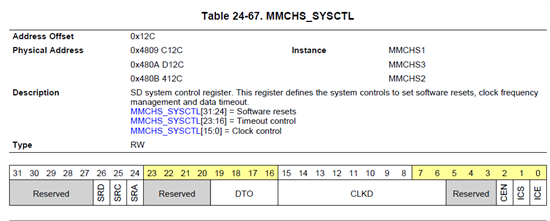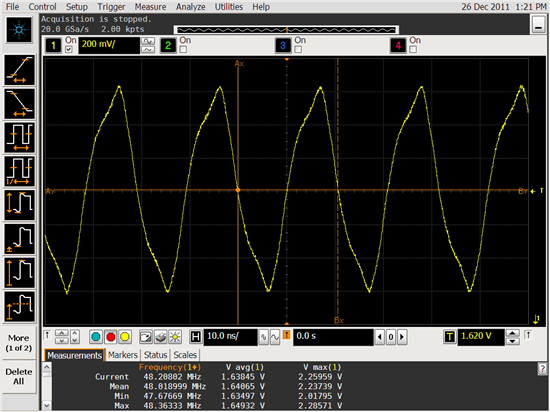Hi Everyone :
I have a board that connect a Broadcom 4329(wifi module) to DM3730 through the MMC2 interface in sdio mode
And the wifi module work well ,that is , i can connect to wifi AP and use browser to internet
But , I suffer a strange problem now
According to dm3730 datasheet , I can change the sdio clock frequence base on following

But actually,the sdio clock frequence always keep on 96MHz not 48MHz even write "0xe0087" to 480B412C(MMCHS_SYSCTL)
The above value should set the CLKD=2 and the out put clock frequence should be devide by CLKD
Here is another information,
I find the MMCHS2 sdio clock is about 96MHz , but the voltage only 11.7829mV(=0.11V)

Does anyone can give me suggestion how to enable the MMCHS2 voltage ?
ps : I am using beagleboard kernel which verion 2.6.32


